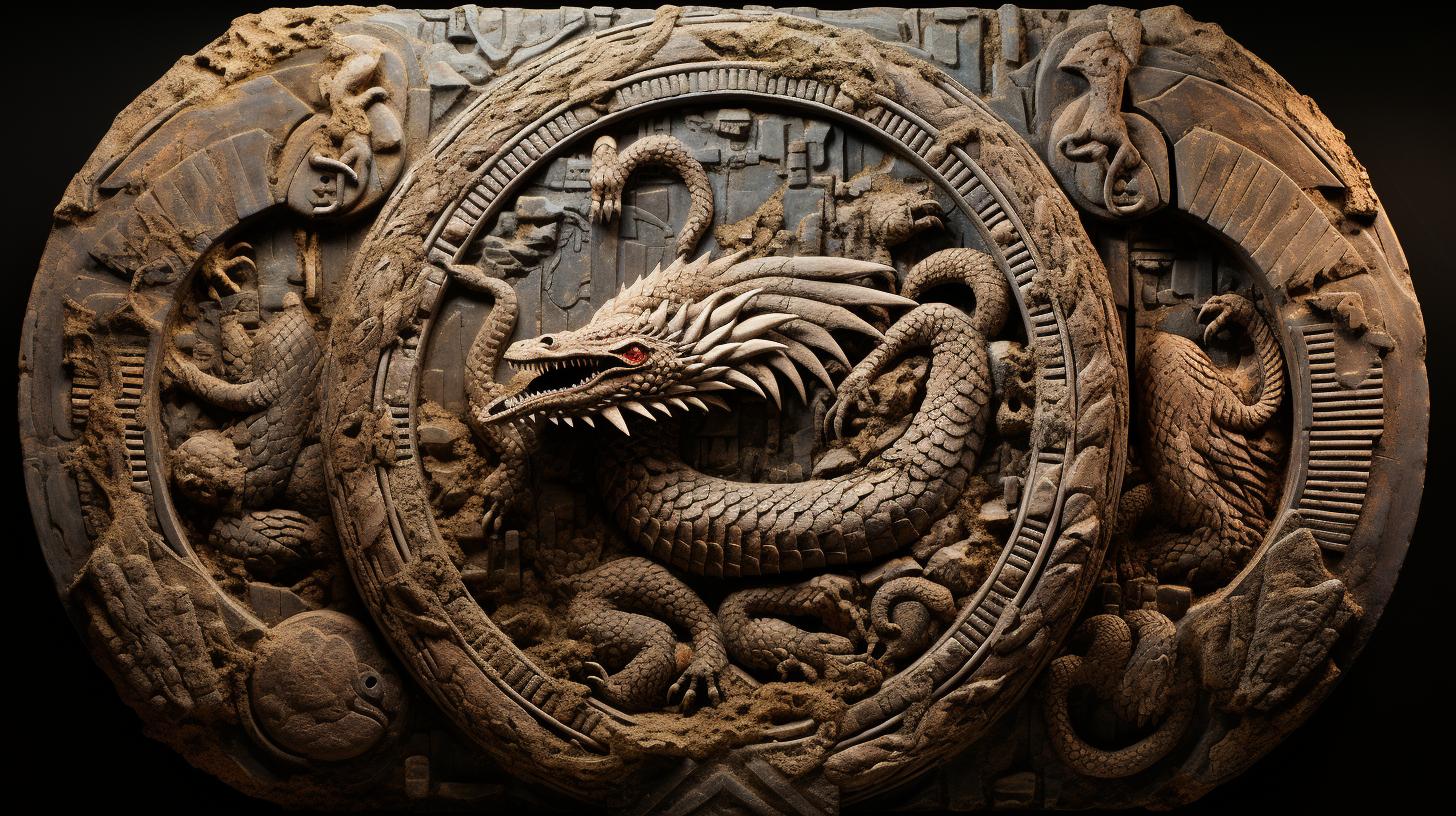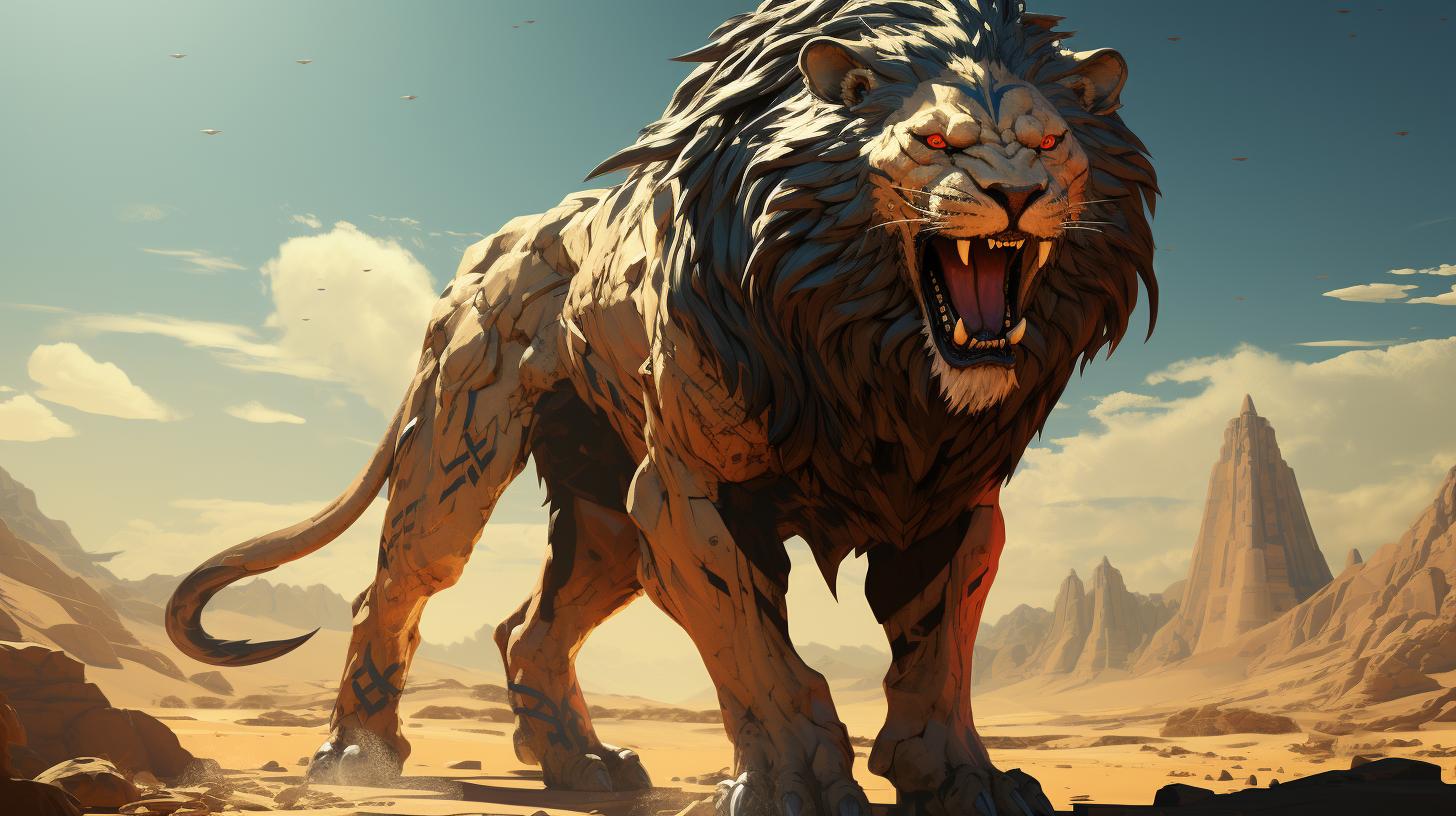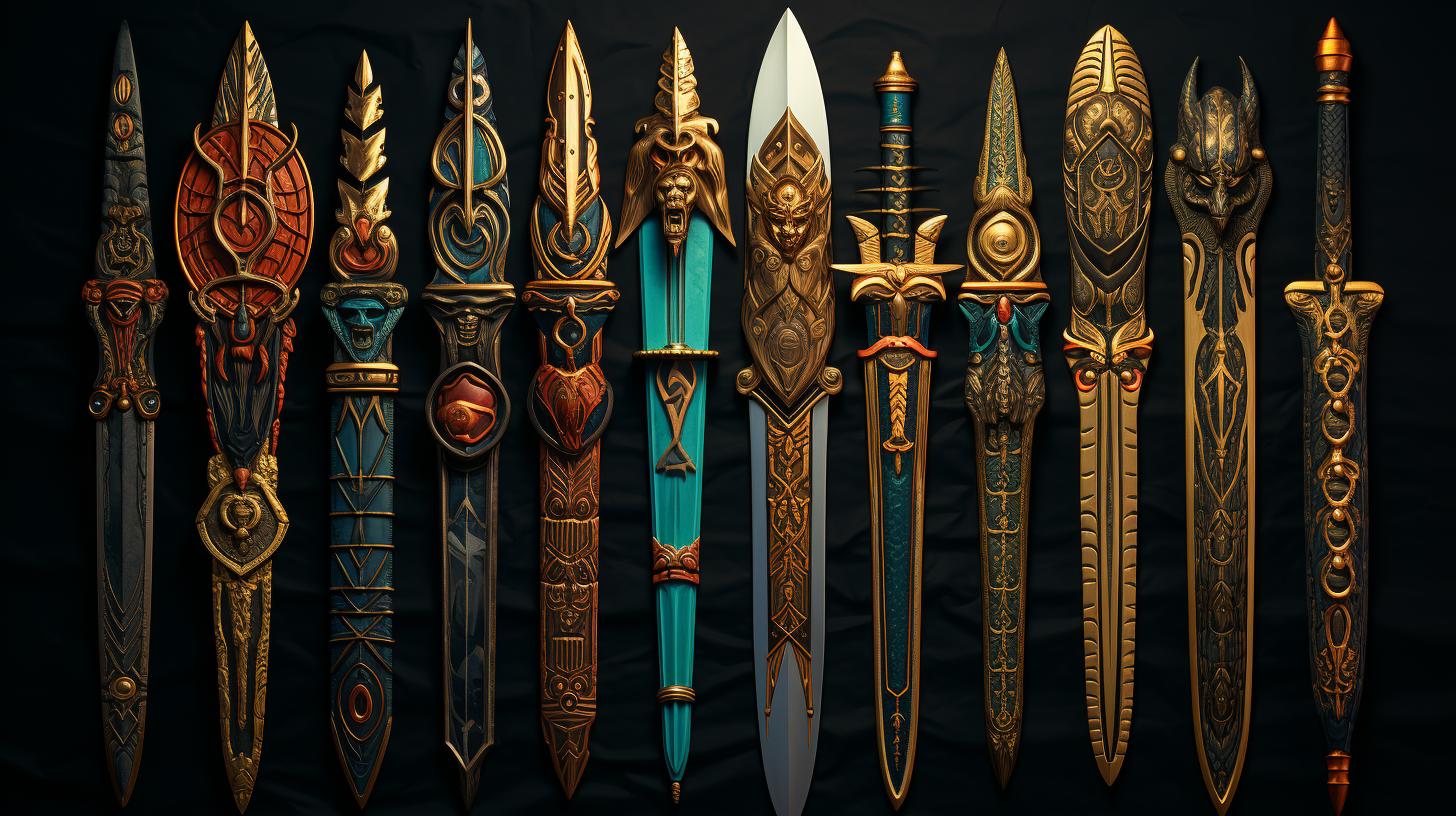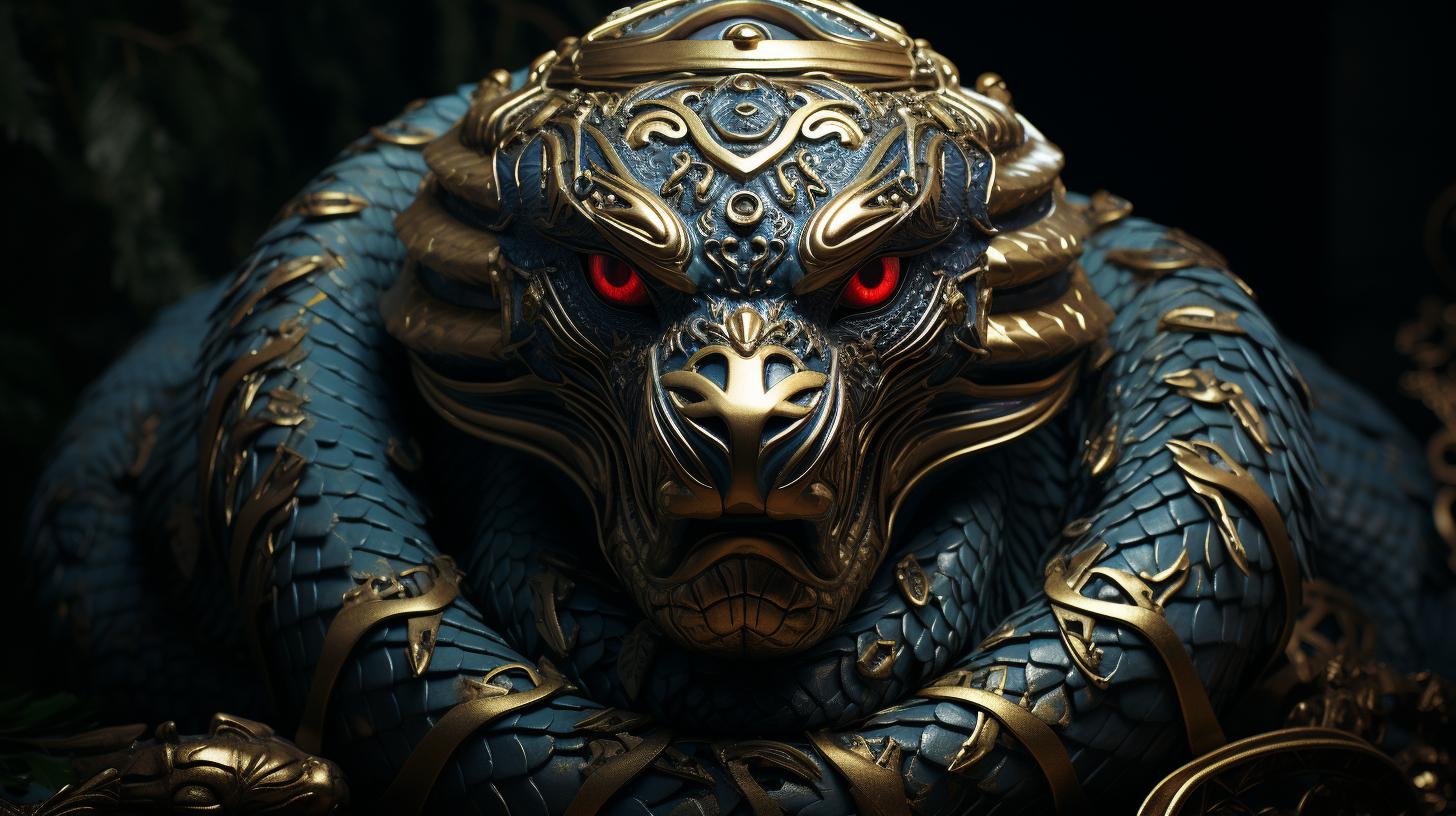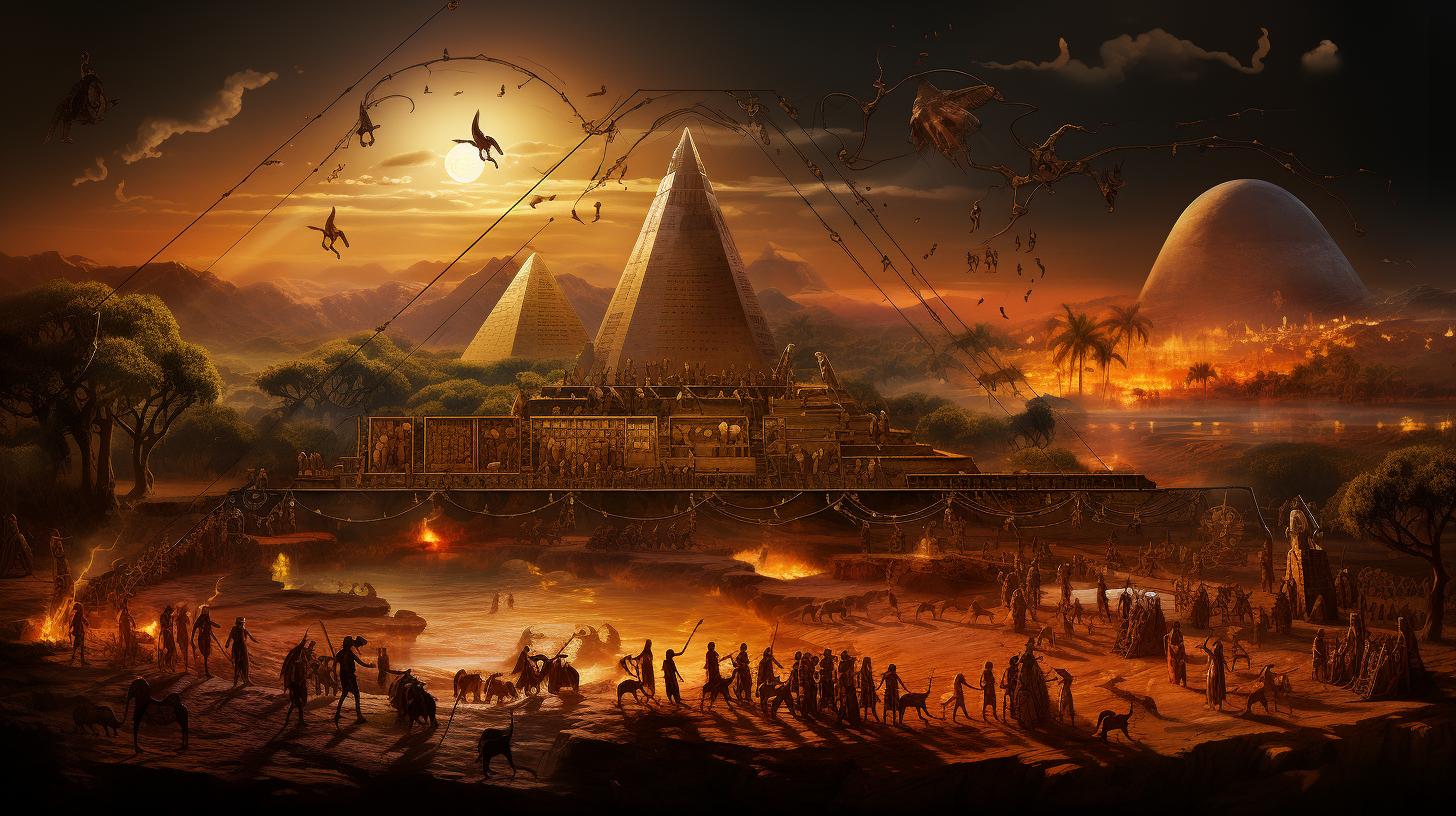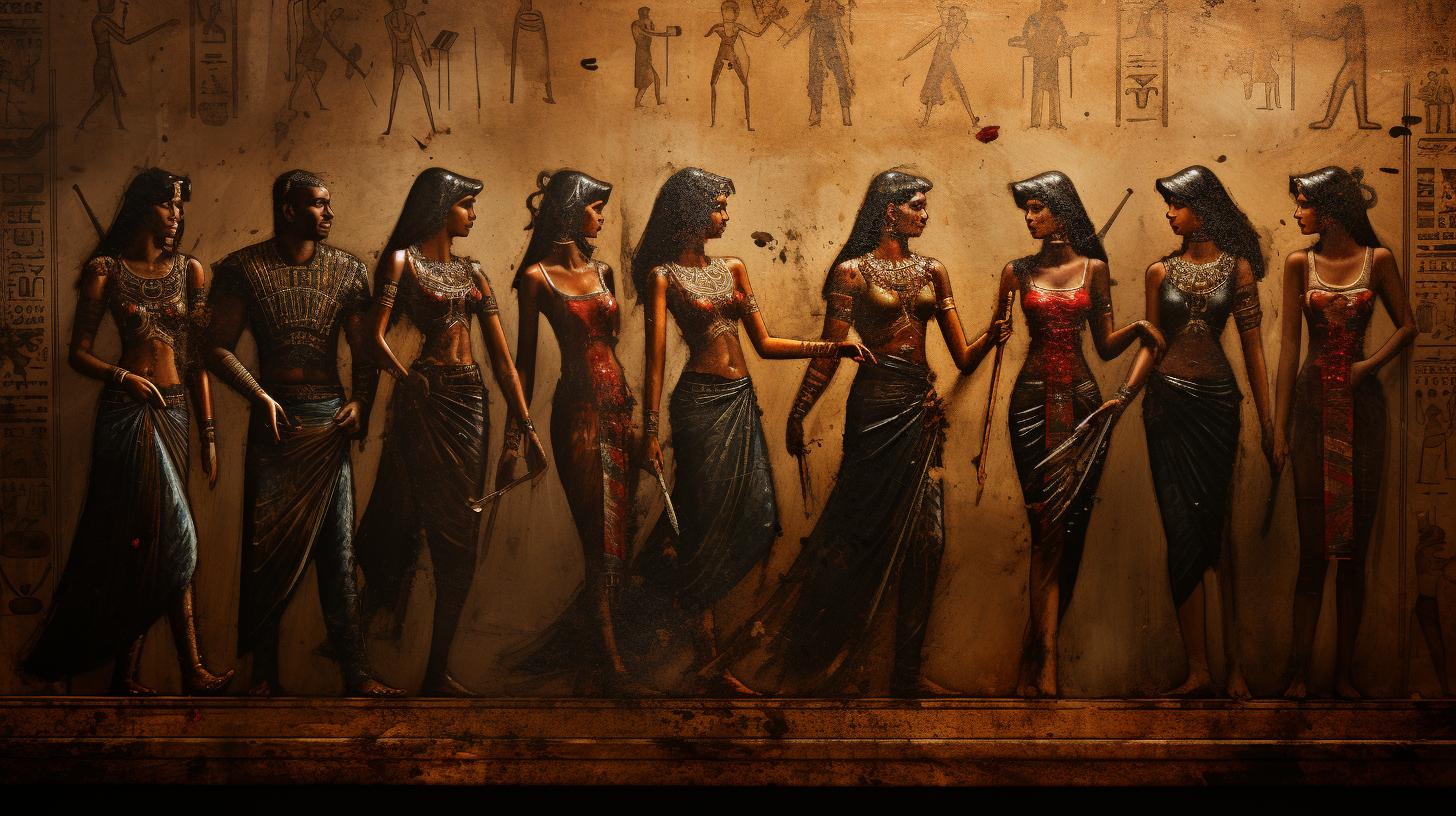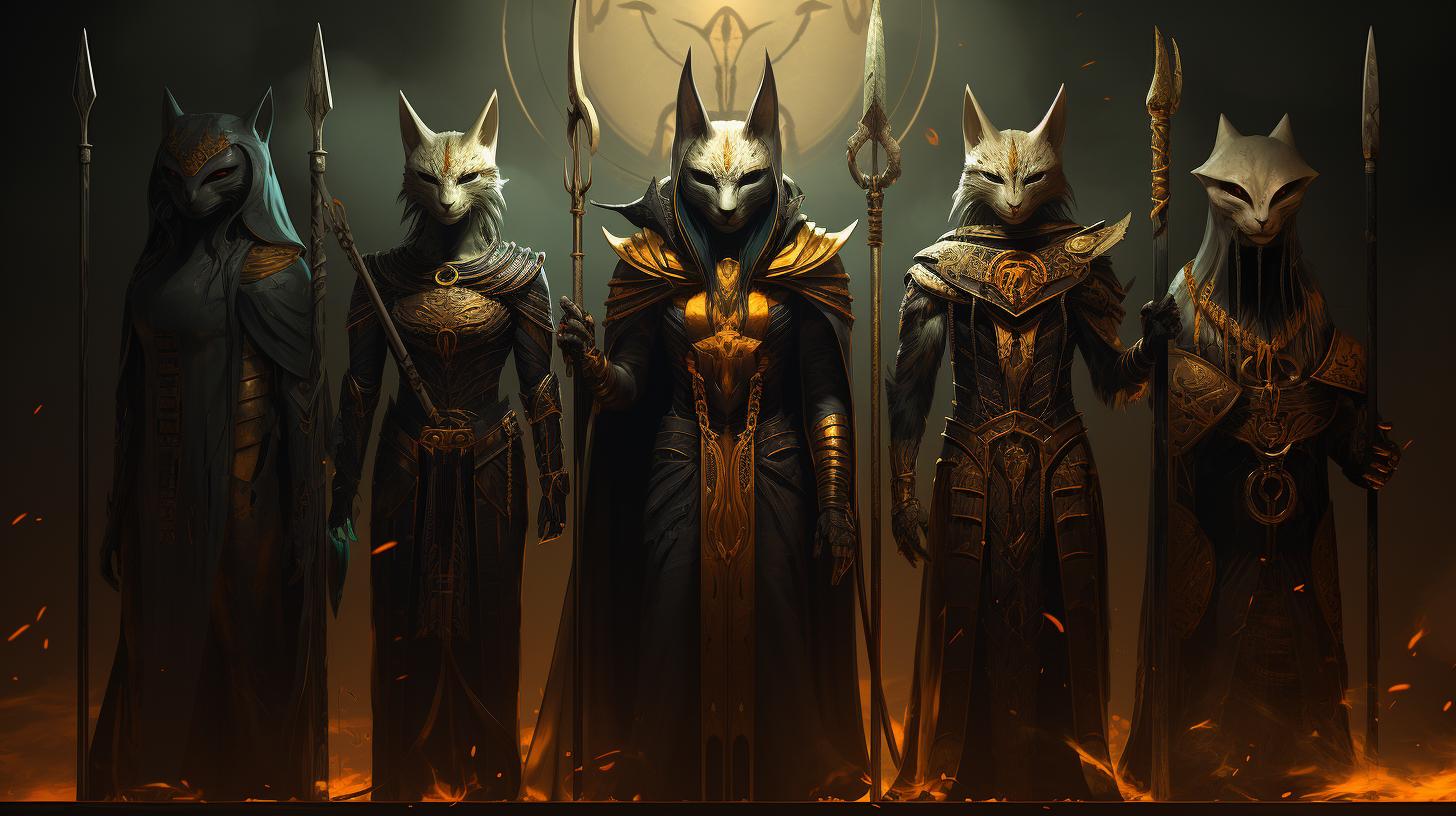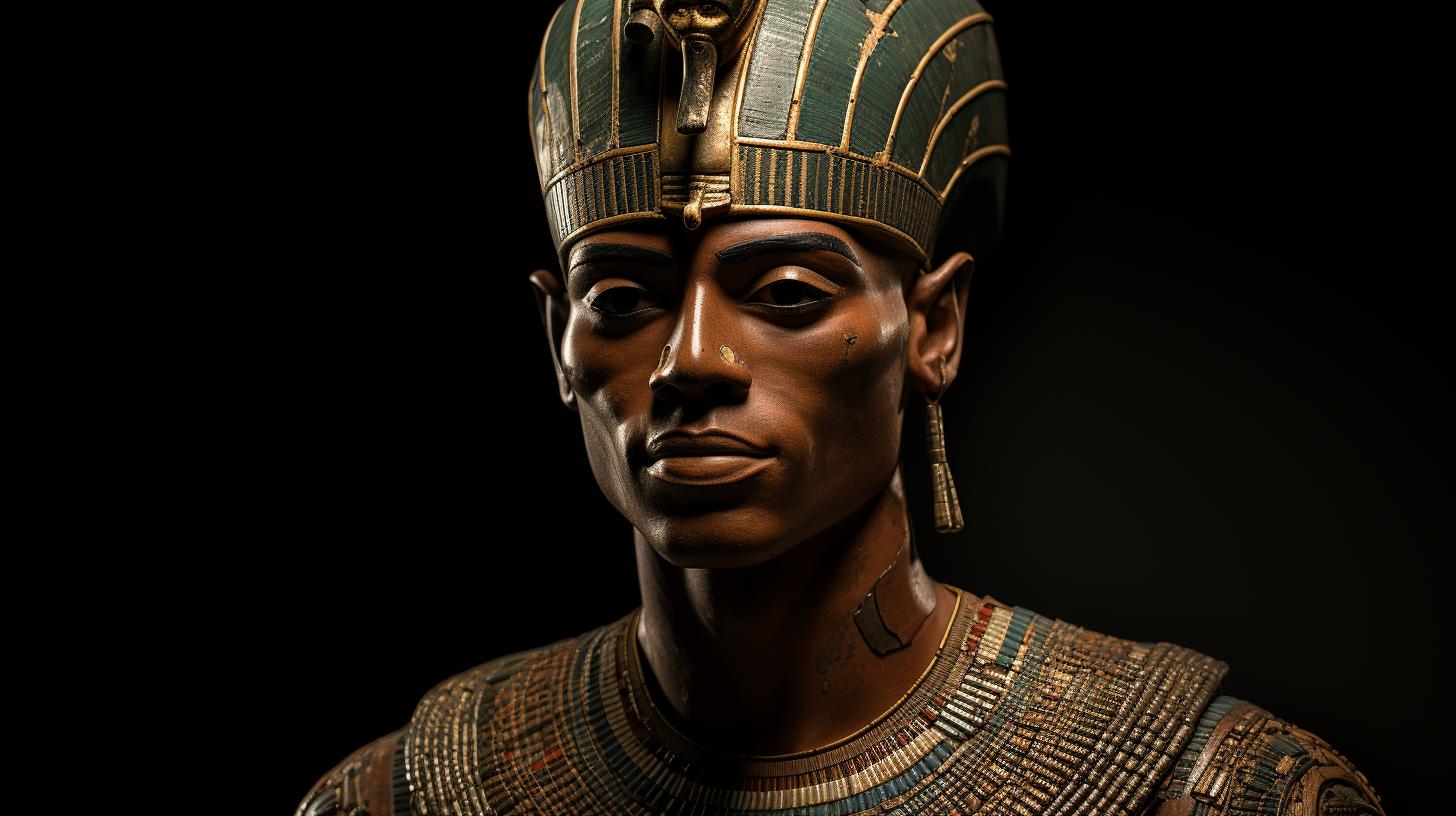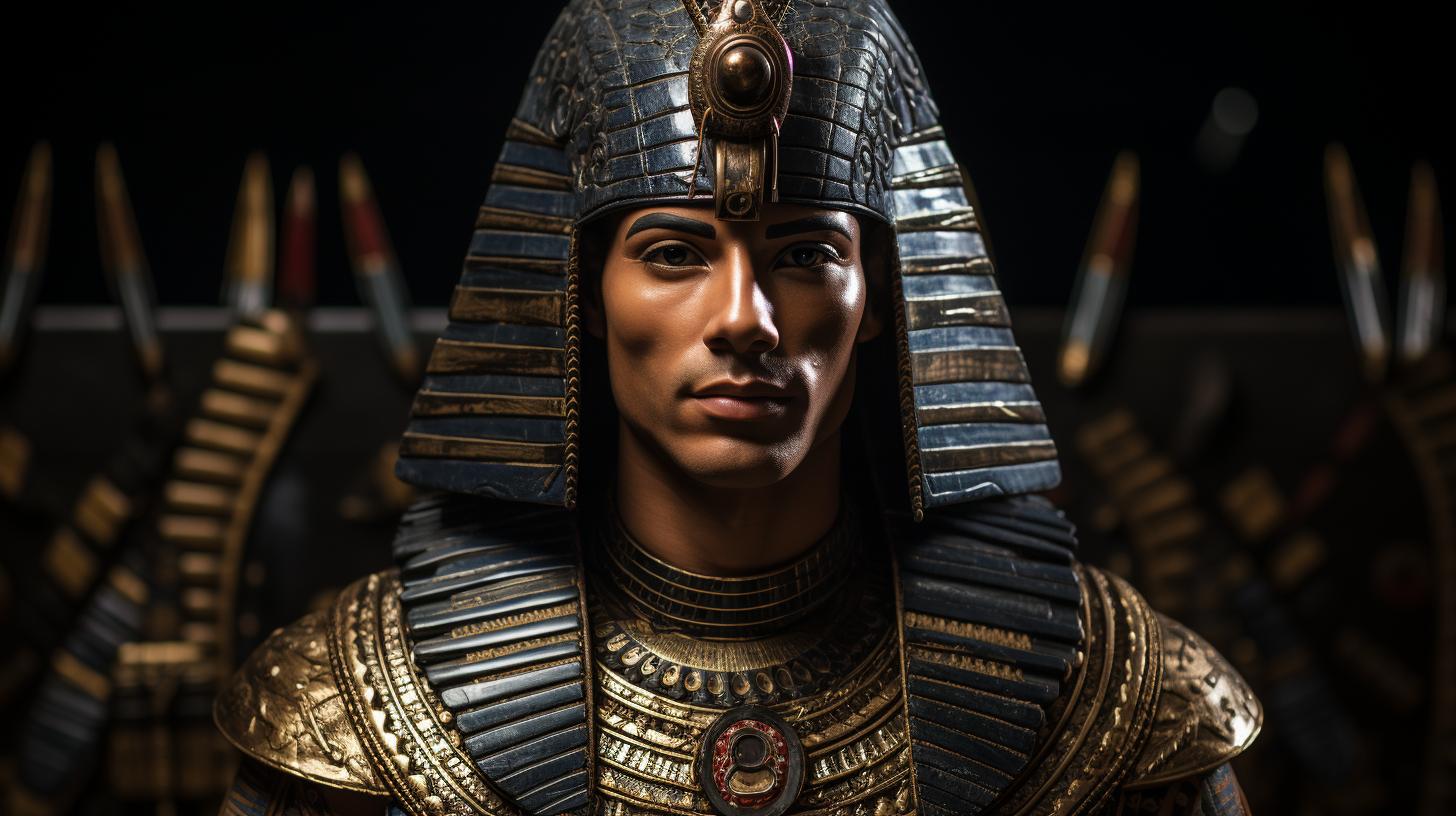Ancient Egyptian Ouroboros: Exploring the Eternal Symbol of Egypt’s Ancient Past
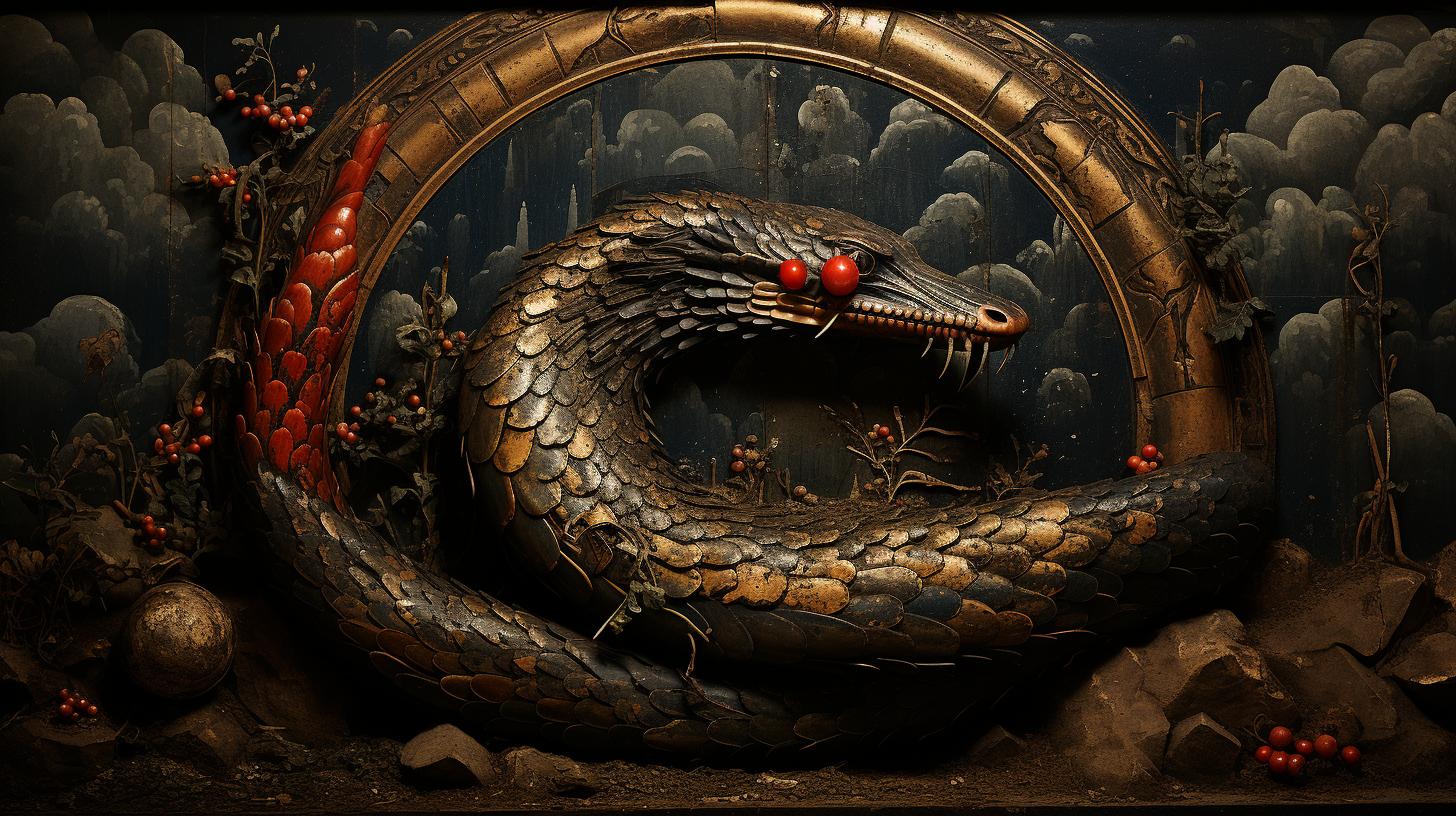
The Ancient Egyptian Ouroboros, a symbol of eternal cycle, holds significant meaning in both Egyptian and Greek cultures. In Ancient Egypt, it symbolized unity and the perpetual cycle of nature, while in Greek mythology it represented eternal renewal.
This symbol has been found in the tomb of Tutankhamun and has connections with alchemy and Norse mythology. Its influence extends to scientific discoveries, such as August Kekule’s inspiration for the structure of the benzene ring.
Throughout history, the Ouroboros has inspired thinkers and continues to be relevant in various disciplines.
Ancient Egyptian Ouroboros: Exploring the Symbol of Eternal Cycle
The Ancient Egyptian Ouroboros holds great significance in Egyptian culture, representing the eternal cycle of destruction and rebirth. Let’s delve into its origins, symbolism in Egyptian mythology, presence in ancient Egyptian artifacts, and its profound significance in alchemy.
Origins of the Ouroboros in Ancient Egypt
The Ouroboros can be traced back to ancient Egypt, dating back to the 13th and 14th centuries BC. Unlike its negative connotation in Christian tradition, the Ancient Egyptian Ouroboros symbolizes unity and the everlasting cycle of nature.
The Symbolism of the Ouroboros in Egyptian Mythology
In Egyptian mythology, the Ouroboros represents the eternal and cyclical nature of existence. It embodies the concept of life, death, and rebirth, symbolizing the ongoing renewal of the world and the interconnectedness of all things.
The Ouroboros in Ancient Egyptian Artifacts
Throughout ancient Egyptian civilization, the Ouroboros was depicted in various artifacts, including the famous discovery in the tomb of Tutankhamun. Its presence in these artifacts emphasizes its role in signifying the cyclic nature of life and the periodic renewal of the world.
The Ouroboros and its Significance in Alchemy
In the realm of alchemy, the Ouroboros holds a special place as a symbol of transformation and renewal. It represents the never-ending cycle of dissolution and reconstitution, signifying the alchemical process of transmutation and spiritual enlightenment.
The Ouroboros in Greek Culture and Beyond
The Ouroboros, a symbol of eternal cycle and renewal, found its way into various aspects of Greek culture and beyond. This section explores the adoption and significance of the Ouroboros in Greek mythology, philosophy, Gnosticism, Hermeticism, and its presence in other cultures such as Norse mythology and Indian philosophy.
The Adoption of the Ouroboros in Greek Mythology and Philosophy
In Greek mythology, the Ouroboros symbolizes the cyclical nature of life and the concept of eternity. It was associated with the concept of the immortal and ever-renewing divine. The serpent or dragon biting its own tail represented the endless cycle of creation and destruction, an inherent part of life.
The Ouroboros in Gnosticism and Hermeticism
Gnosticism, a mystical belief system heavily influenced by Greek philosophy, embraced the symbolism of the Ouroboros. In Gnostic teachings, the Ouroboros represented the eternal soul of the world and the interconnectedness of all things.
It symbolized the cyclical nature of existence and the pursuit of spiritual enlightenment.
In Hermeticism, an ancient philosophical and esoteric tradition, the Ouroboros was seen as a symbol of transformation and self-realization.
It encapsulated the concept of the alchemical journey, where the individual strives to transcend limitations and achieve a state of wholeness and unity with the divine.
The Ouroboros as a Symbol of Eternal Renewal in Various Cultures
- Ancient Egypt:
- Alchemy:
- Norse Mythology:
- Indian Philosophy:
The Ouroboros held significance in ancient Egyptian culture, representing the periodic renewal of the world and the cycles of nature.
In alchemy, the Ouroboros symbolized the process of transformation and the cyclical nature of the alchemical work. It represented the continuous cycle of death, rebirth, and spiritual growth.
The Ouroboros appears in Norse mythology as the serpent Jörmungandr, encircling the world and representing the eternal cycle of life and apocalypse.
In Indian philosophy, the Ouroboros finds its resonance as a symbol of the divine energy known as Kundalini, which represents the eternal cycle of spiritual awakening and transformation.
Throughout different cultures and traditions, the Ouroboros reflects the universal concept of eternal renewal, endless cycles, and the interconnectedness of all things.
Scientific Interpretations and Inspirations
The Ouroboros’ Influence on Scientific and Philosophical Thought
The ancient Egyptian Ouroboros has had a significant influence on scientific and philosophical thought throughout history. Its symbol of a serpent or dragon devouring its own tail represents an eternal cycle of destruction and rebirth, captivating the minds of scholars and thinkers.
This symbol has sparked contemplation on universal interconnectedness and the cyclical nature of existence, provoking deep questions about life, death, and the cosmos. The Ouroboros has inspired the exploration of metaphysical concepts and the search for deeper meanings in various scientific and philosophical disciplines.
August Kekule’s Inspiration: The Ouroboros and the Benzene Ring
One notable example of the Ouroboros’ influence in the scientific realm is its role in August Kekule’s breakthrough in organic chemistry. In the 19th century, Kekule, a renowned chemist, had been pondering the structure of the benzene molecule.
Legend has it that while half-asleep, he envisioned a serpent devouring its own tail, which led him to the realization that the benzene molecule possessed a cyclic structure. This groundbreaking discovery revolutionized the understanding of organic compounds and brought forth a new era in chemistry.
The Ouroboros, in this context, symbolized the cyclic nature of molecular structures.
The Ouroboros as a Symbol of Transformation in Modern Science
In modern scientific disciplines, the Ouroboros continues to hold significance as a symbol of transformation. The concept of continuous renewal and perpetual cycles resonates in various fields such as evolutionary biology, quantum physics, and systems theory.
The Ouroboros represents the transformative nature of life, encompassing ideas of adaptation, growth, and change. It serves as a reminder that all things are interconnected and constantly evolving, prompting scientists to explore the dynamics of complex systems and the emergence of new patterns.
The Ouroboros’ Relevance in Contemporary Research and Disciplines
Contemporary research across diverse disciplines acknowledges the relevance of the Ouroboros as a source of inspiration and symbolism. From psychology to neuroscience, the depiction of a serpent consuming its own tail represents the cyclical aspect of human existence, personal transformation, and the journey of self-discovery.
In addition, the Ouroboros is often used as an emblem for sustainability and ecological sciences, underscoring the need for balance and interconnectedness in environmental systems. Its powerful symbolism continues to inspire researchers and scholars, encouraging them to explore innovative ideas and forge new connections between seemingly unrelated fields.
In conclusion, the ancient Egyptian Ouroboros has left an indelible mark on scientific and philosophical thought. Its influence can be seen in the contemplation of universal interconnectedness, the breakthroughs in understanding molecular structures, the exploration of transformative processes, and the recognition of symbiotic relationships in contemporary research.
As we continue to delve into the mysteries of the world, the Ouroboros remains a timeless symbol, provoking curiosity and guiding our pursuit of knowledge and understanding.
.

